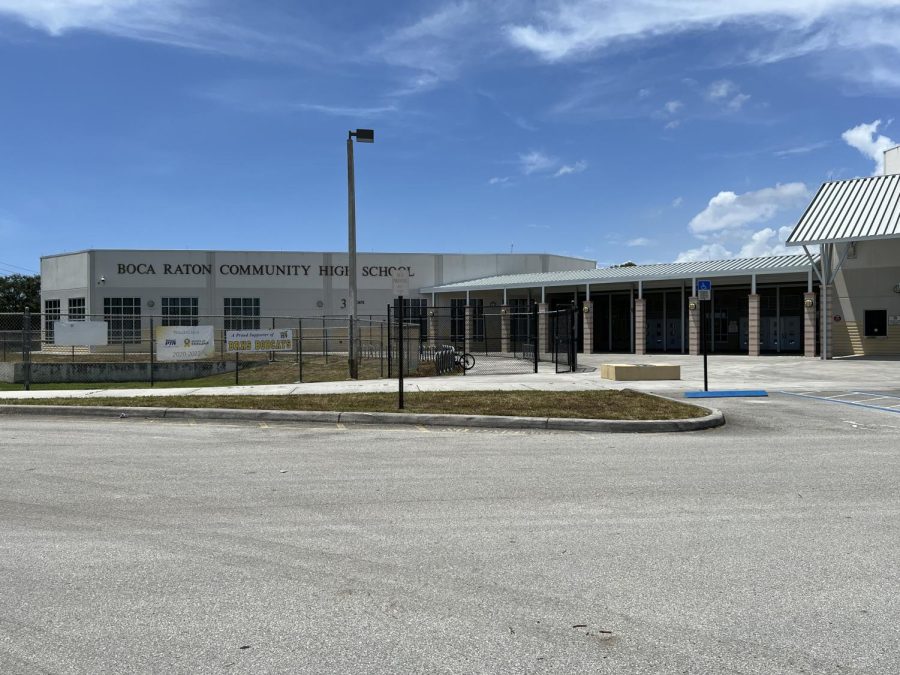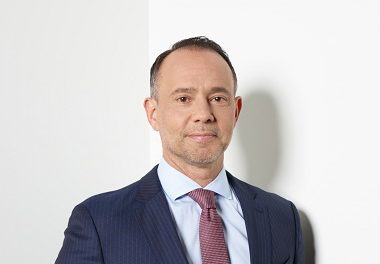Experts detail history of school meals, Black Panther tie
Federal lawmakers recently gave the USDA authority to extend the waivers, but only through the end of September — which concerns parents, guardians and school officials.
Photo of Boca Raton Community High School.
August 4, 2022
Thousands of children in Palm Beach County have enjoyed school meals at no cost because of a series of free meal waivers from the federal government intervention at the onset of the pandemic.
Federal lawmakers recently gave the United States Department of Agriculture authority to extend the pandemic-era waivers, which have provided for free school meals to school districts nationwide since March 2020. For now, the waivers are only good through the end of September, which concerns parents, guardians and school officials.
FAU professor Jermaine Scott claims the purpose of the program comes from the ideals of two very different entities who shared common goals about child nutrition — the Black Panther Party and the federal government.
“There are some historians that say it was a Black Panther Party that really launched this whole initiative around nutrition and student performance,” said Scott, a sports historian and expert in African-American studies. “There are other historians that would suggest they didn’t really have a direct influence on the federal government program, but it was part of a larger context.”
Additionally, Scott says while both entities understood the connection of good nutrition and academic performance, the origins of the Panther Party’s program are not commonly known due to negative public perception of the group.
“The Black Panther Party was a revolutionary socialist organization,” he said. “And during the 1960s, I mean, throughout American history, anything that was associated with socialism or communism had an X on their back.”
The Black Panther Party Free Breakfast Program v. The Federal Government’s School Breakfast Program:
In 1966, the USDA began piloting its free breakfast program in schools–and simultaneously, a civil rights group called the Black Panther Party was putting together its own.
Under this two-year pilot, the definition of who qualified as “nutritionally needy” was not clearly defined, but the USDA focused primarily on low-income areas.
In January 1969, the Black Panther Party began its Free Breakfast program at St. Augustine’s Church in Oakland, Calif.
The Panthers’ Free Breakfast program was a part of over 60 survival programs that catered to the community’s immediate needs. They included services like free health clinics, transportation, and tutoring.
“While the federal government started this program in 1966, it was only the Black Panther Party’s program that started in 1969 that generated a more holistic conversation about nutrition in the inner cities,” said Scott.
Cheryl Dong is a Black Panther historian who will begin a professorship at Bowling Green State University this fall. She says the Panther Party vexed the FBI and their efforts to distribute resources were met with pushback.
“If they’re marching around with guns in Sacramento, they can be pushed off in the mainstream as these radical, crazy angry Black men,” she said. “But if they are feeding children, thousands of them, and they’re making positive change in their communities, that’s when they become the real threat.”
According to Scott, local businesses and churches donated items like milk and grits for the breakfast program. In the first year, the Panthers fed over 20,000 children; by 1971, chapters in at least 36 cities administered a free breakfast program.
“In a 1969 U.S. Senate hearing, the National School Lunch Program administrator admitted that the Panthers fed more poor school children than did the State of California,” according to Black Past, a Seattle-based nonprofit online repository of Black history.
The federal government’s School Breakfast Program became official in 1975–a few years after the FBI’s COINTELPRO operation conducted raids and misinformation campaigns in effort to dismantle the Panther Party.
The Black Panther Party officially disbanded in 1982.
How Does Palm Beach County Approach School Nutrition?
Both Palm Beach County and the USDA maintain sites for finding food for students during the summer. At present, some of the free lunch waivers are set to end on Sept. 30. Without an extension from federal lawmakers, certain districts may not be able to offer free meals any longer in some circumstances.
There are meal distribution sites county-wide, and children from ages 0 to 18 can get free breakfast, lunch, dinner and snacks.
District 4 representative Erica Whitfield has been on the Palm Beach County School Board for eight years. She also serves as Chair of the United Way’s Childhood Hunger Action Committee – Childhood Subcommittee.
Recently, Whitfield says she brought her 2-year-old daughter to pick up a meal at a distribution site.
“It’s just a really good lunch for her to eat and she really enjoyed it,” said Whitfield. “More of these people I talk to are just excited they don’t have to pack a lunch for their kids, cause it’s one less thing to worry about.”
Additionally, she says the only opportunity for many students to eat is at school.
“They’re only really getting to eat good food three times a day, on the days that were open,” said Whitfield. “So they go home on the weekends and they have really insecure or poor food choices over the weekend, and then they come back on Monday morning and they’re just really hungry.”
Katie Wilson, Executive Director of the Urban School Food Alliance, has worked in school nutrition for 40 years. She says public schools offer transportation, classroom facilities, and even technology– but meals are not always universally provided.
“When it comes to food, which we know is a basic necessity for being able to do those learning activities and to really excel in the classroom, we ask them what their family income is,” said Wilson.
Both Whitfield and Wilson discussed the stigma behind free or reduced meals, mentioning that some children who qualify end up not eating at all.
“You’ll notice [that] even if a school is the same population, their elementary school might be 99% free and reduced lunch,” said Whitfield. “Then when you get to middle school, it drops down to like 95-90%. And then by high school, you’re at like 85%. It’s the same kids. They just stopped filling out the paperwork. They still need it.”
Whitfield says one of the district’s goals is to adopt a Community Eligibility Program, which would look at the entire district’s eligibility for free meals instead of individual families.
Under this program, Whitfield says that as long as 40% or more students in the district qualify for free or reduced meals, they can continue offering breakfast and lunch throughout the school year.
Nadia Gordon is the Director of Broadcast Journalism for the University Press. For more information on this article or others, you can reach her at [email protected]
















